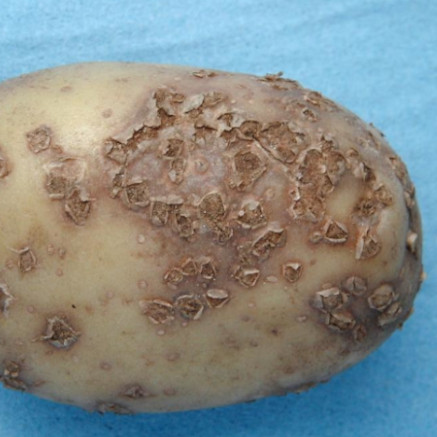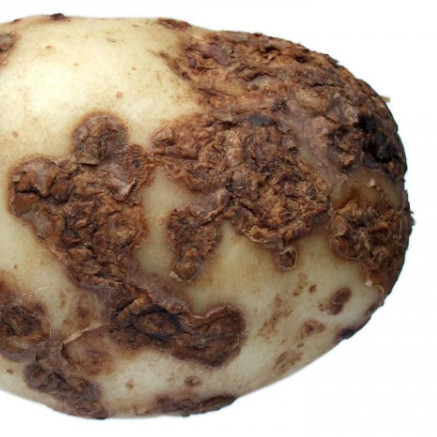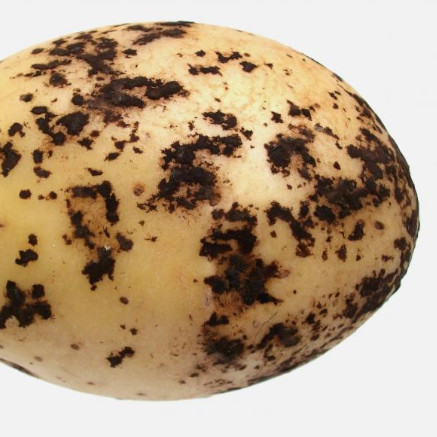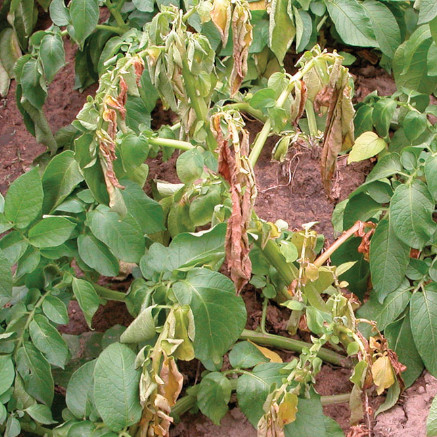Healthy fields. Healthy yields
Potatoes are susceptible to diseases like Powdery Scab (Spongospora Subterranea), Common Scab (Streptomyces), Rhizoctonia (Rhizoctonia Solani), and Verticillium Wilt (Verticillium Dahliae).

Powdery Scab
Powdery Scab is a fungal disease which can last up to 10 years in the soil without proper treatment. The fungal blemish appears as purple-brown pustules on the skin of potatoes, which darken with masses of brown spores.

Common Scab
The three main types of Common Scab – raised, pitted, and superficial – are bacteria that resemble fungi due to their threadlike growth. The bacteria affects the surface of the potato tubers causing various erumpent, russet, and pitted lesions, making the potatoes unfit for market.

Rhizoctonia
Rhizoctonia Solani is a soil-borne fungal pathogen which targets potato crops, causing Sclerotia (Black Scurf) on Tubers, as well as Stem and Stolon lesions (Cankers) on younger plants. This fungal pathogen dramatically reduces the quality of both fresh and seed potatoes, even impacting the establishment of new crops altogether.

Verticillium Wilt
Verticillium is a soil-borne disease which is spread via wide range of hosts, including soil attached to seeds. V. Albo-Atrum and V. Dahliae are the two species that affect potatoes, surviving for years within plant debris and soil where they cause aboveground stunting, wilting, and even death.

